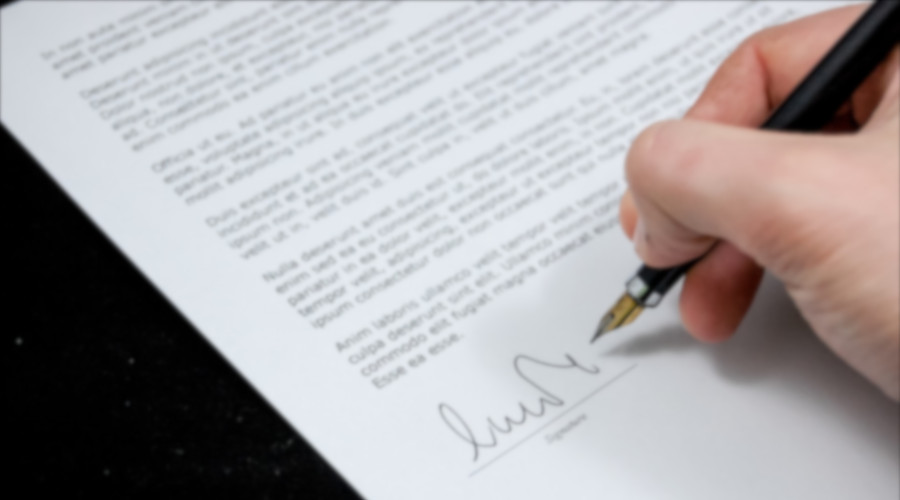Immigrating to any new country is bound to bring a lot of stress and confusion. Making money is usually the first worry on anyone’s mind, and it is far from simple to find a job in a country other than yours. When you do not know the language, getting a work visa becomes five times more difficult.
Luckily, here at IVANNOVATION, we have decided to lay out key steps and tips on securing proper translations for documents in your work permit application. Whether you are hiring or a jobseeker, you will gain clarity on employment-based immigrant visas, government-approved translations, and more after reading our article below.
Firstly, What Is An Employment Visa?
An employment visa or work visa is explicit permission from a government granting a foreigner the right to work within its borders. These visas can range in terms of time length, types of jobs one can do, access to social assistance, and so on.
Many, if not most, work visa holders migrate for better opportunity and are often fleeing failing economies or sociopolitical instability. The OECD maintains that international migration to Global North regions such as North America and Western Europe, plus other areas with at least a somewhat stable economy, is “at unprecedented levels.”
 While this fact is a boon for diversity and speaks to their welcoming cultures, some of these countries are now pushing back with stringent measures. The discussion surrounding curbing migration takes place in a few sections after this. Our main priority at the moment is making sure you know how to send in a visa application that governments can read and understand.
While this fact is a boon for diversity and speaks to their welcoming cultures, some of these countries are now pushing back with stringent measures. The discussion surrounding curbing migration takes place in a few sections after this. Our main priority at the moment is making sure you know how to send in a visa application that governments can read and understand.
A key part of that is the translation of all supporting documents for your work visa application. That’s what we’ll cover next.
 What Translation Services Should You Use? (Hint: It’s Not Google)
What Translation Services Should You Use? (Hint: It’s Not Google)
A great question to ask is, “Why do you need translations of supporting documents in the work visa process?” Or, “Do governments not have their own in-house translators?” Unfortunately, budgeting and staff capacity have not guaranteed ready translators in every aspect of public bureaucracy.
Sure enough, this means you will have to secure your own translation when in need. This just requires you to understand what constitutes a viable translation. Rule of thumb: stay away from machine translations and seek out people who translate official paperwork for a living. Whilst getting your translated documents in order, please adhere to these major rules below:
Read More
How to Get Birth Certificate Translation for USCIS: Document Translation for Immigration
Marriage Certificate Translation Services: Is My Foreign Marriage Certificate Valid in the USA?
Certification
Is there any global certification body for formal translations? The answer is no. Regulations for certified translations are different depending on the country.
Instead, you would want to find a qualified translator or translation company and that entity would certify the translation for you. That certification is considered valid based on their reputation as a company or translator.
Many private businesses offer these services. To confirm that they are legitimate, check customer reviews and ratings, look at their overall presentation, and check for their membership in professional organizations.
Need Translations?
Send your work visa documents that need to be translated for a quote.
Certified Document Translation Services
If you want to find an individual translator, find a translator who passed certificate exams or has a university degree in a language, linguistics, or translation/interpretation.
Note:
The meanings of a “certified translation” and a “certified translator” are completely different. A certified translation is simply a translation that is accompanied by a signed affidavit attesting to the accuracy of the translation. A certified translator, however, is a translator that has received the approval or sanction of some translation industry association.
You can also check for the translator’s affiliation with national translating associations in the country you are applying to. Here are a few examples to bring the point home.
The United States has the American Translators Association (ATA) Certification Exam with a pass rate of 20%. The United Kingdom boasts the ITI (Institute of Translation and Interpreting), the “only UK-based independent professional membership association” for translators, and offers a free search database for you to find a qualified translator. There are, of course, other organizations, but these two offer a glimpse into the vanguard of modern industry standards.

Although it may be tempting asking a nephew or other family member to translate your legal documents for USCIS is a bad idea. USCIS requires certified translations.
Notarization
We can’t make an absolute statement covering every situation, but if you are applying for a work visa in the USA, you will probably not need notarization. Mere certification should do the trick.
But different countries and different offices have different requirements.
Since notarization takes more effort than certification, be sure to find out what is required for your use in seeking an employment visa. If the rules say that only certified translation is required, you can just omit notarization.
But what is notarization? Notarizing a translation means that a witness, specifically a notary public, watches the signing of the certification document and then stamps it with their seal and signs it themselves. This notary public will also check the government ID of the person signing. By stamping and signing the document, the notary public is swearing that they witnessed the document being signed by the actual person identified.
A notary is someone who holds the relevant legal qualification in their country to do such work. This qualification usually entails coursework and background screening.
The entire notarization process lowers the risk of fraud and is akin to testifying in court under oath. Good news: most private translation companies offer to notarize your translated document if you require notarization.
If you hired an individual translator, he or she should know how to get the translation notarized, but for your information, you can usually get documents notarized at banks, print and copy stores (such as The UPS Store), and any small businesses that advertise notary services online.
So, What Documents Are Usually Required For A Work Visa?
To start off with the most basic inquiry: how do you get a work visa? Regardless of their original country, all applicants will have to show certain supporting documents.
You will probably need a current passport, a contract or letter of work sponsorship, birth or marriage certificates for visa dependants, and health records depending on your place of origin. Let us have a look at some popular countries’ requirements and visa processes next.
United States
A US work visa is perhaps one of the hardest to obtain globally. The most well-known American visa is the H-1B visa, where university degree holders are eligible to work in a specialized or complex career field such as STEM. The H-2B visa is for less technical occupations that are often temporary or seasonal, provided there is not enough native talent available at the moment.
USCIS (United States Citizenship and Immigration Services) is the authority responsible for approving (or rejecting) all visa applications. USCIS’s main asks during the visa process include a current travel document, letter of employment, the relevant application form, and evidence of education, past employment, or past residence periods within the States.
Other American employment visa options include the TN visa for Mexican and Canadian citizens (under the NAFTA Agreement), the H-1A visa for seasonal farmers, E-3 visa for Australian degree holders, O-1 visa for internationally-renowned expertise, and E-1 and E-2 visas for traders and investors.
The only opportunities to get a US work visa without a job offer are for extraordinary ability, investors with at least $900,000, and work that is of national importance (think advanced degrees and both extensive experience and accolades). As English is the only national language in America, all documents should be submitted in English or have the originals along with certified signed translations.
You can read our article about USCIS-approved translations for American visas here.
Germany
Germany needs a special mention thanks to its status as one of the easiest (and most popular) places to be a foreign worker in. D-visas concern general employment but come in categories based on various nationalities, education levels, and occupations.
The documentation you need to present depends on your nationality (obviously only if you are from outside the European Union). Select nationalities (such as America, Canada, Australia, and a couple others) can get a residence visa before applying for a work permit when in the country. Every other nationality must secure their work visa first before flying to Germany.
Documents required include a valid passport, work contract, photocopies of degree certificates, and a certificate of health insurance sponsored by one’s German employer. The German government accepts notarized original documents in German, English, and French, but originals in other languages should be submitted alongside a certified translation.
United Kingdom
Great Britain is also another popular destination for temporary visas. The most common UK work visa is the “Skilled Worker visa,” formerly known as the Tier 2 general work visa. A livable wage and offer of sponsored employment serve as the main criteria, while jobs in healthcare and education enjoy more leeway.
Usual documentation wanted is a certificate of sponsorship, national identity document, the employer’s details, and the job’s occupation code, title, and salary. Additionally, proof of English language proficiency is required except for applicants from a list of select countries. Original documents need to be in English or Welsh, or they must come with a certified translation.
There are many other employment permits offered based on a variety of criteria mainly contingent upon certain nationalities and occupations. Bad news alert: Home Secretary James Cleverly announced just last December a slew of new restrictions that essentially make the road to residency much harder. We take a deeper look at this development later on.
United Arab Emirates
The West is not the only gold mine of opportunity. The United Arab Emirates is fast becoming a Mecca for bankers, real estate agents, and other corporate mainstays. All in all, the UAE (most notably their city-state of Dubai) is fast becoming a target of international migration, even for Westerners as well.
In the Emirates, you can get the five-year green visa without sponsorship from an employer if you are an established freelancer or a skilled worker with a job offer. The standard work visa is for two years, but the employer must apply for the applicant’s residence visa. There is also a visa for domestic workers and a golden visa where, akin to America’s extraordinary ability visas, exceptional foreign talent can sponsor themselves.
Emirati employment-based visas need documents such as a medical test, passport (plus the employer’s passport and residence permit), housing contract, entry permit, university certificates, any dependants’ birth certificates, health insurance, and divorce or death certificate for divorcées or widows, alongside any other requisites. The documents must be in both Arabic and English, or have certified translations in the two if their originals are of another language.
 Singapore
Singapore
With one of the strongest economies in the world, Singapore is a great country for job seekers in Southeast Asia. With a 2.8% increase in their economy at the end of 2023, Singapore is a serious option for work migrants.
Singapore offers a multitude of work permit options: professionals have to make $5,000 Singapore dollars a month and pass a standardized test, entrepreneurs need a venture-backed business idea or possess “innovative technologies,” and exceptional foreign talent in a range of industries are also welcome. There are also visas for domestic workers, nannies, industrial workers, entertainers, and even people on short-term job assignments lasting less than 60 days.
The Singaporean government can request a current passport, verification from any relevant professional bodies, past employment history, a business plan and proof of funding (for entrepreneurs), university certificates, and the employer’s identity and financial details. While the national languages are Malay, Tamil, Singaporean Mandarin, and English, such paperwork should be submitted in English or come with certified translations.
Now that you have gotten an idea of the documentation one often needs to apply for a work visa, the discussion turns to how employers and jobseekers alike can navigate the current landscape whilst applying for employment-based visas.
Is It Getting Harder To Obtain A Work Visa?
The British government recently announced changes to their immigration system, making it harder for foreigners to work and reside in the country. One change is raising the minimum salary for a skilled worker visa from £26,200 to £38,700 per annum. And a British citizen will have to sponsor their romantic partner’s visa only if they make at least £38,700 per year, too.
In addition, the shortage occupation list that allows increased hiring for certain jobs will get smaller and care workers can no longer bring immediate family as visa dependents. Amidst all the backlash, the British government’s actions has brought light upon the issue of anti-immigrant sentiment worldwide. The United Nations reported in 2023 a global rise in xenophobia and hate speech. This in turn fuels legislation that bars aspiring migrants from accessing more opportunity to live and work abroad.
Besides Britain, other nations are notable examples of recent pushback against migrants and are probable omens for the future. South Africa, for example, has been in the news due to extreme xenophobia, where migrants are subject to vigilante deportation groups and scapegoated for unemployment, drug use, and other societal ills. Poland’s government and political parties also grapple with discriminatory rhetoric against mainly Muslim migration.
There is no cause to completely lose hope, however. As stated before, Dubai and Germany are some of the easiest countries to get a work visa. Other suggestions for friendly places to move to include Australia, Estonia, the Netherlands, China, and Ireland (but remember that this can change at any time). Regardless of wherever you may go, keep in mind that, as a migrant, you are entitled to the same legal rights as citizens there. Moreover, advocacy groups worldwide offer all the necessary support one may need.
 Conclusion
Conclusion
Going about the work permit process is far from straightforward. Private translation companies are there to help employers and job hunters alike with documentation and ensuring their papers are notarized. When shopping for this service, people must be aware of the country’s specific industry and federal standards for what makes a great translation.
Modern globalization has made the world a smaller place. No wonder job migration is at an all-time high, but certain precautions need to be taken. Passport privilege is alive and kicking, so people with less freedom of movement must be more vigilant. Ensure you have sought-after skills, both sufficient and emergency funds, and strong legal guidance.
While the news bulletins can make prospects look grim at times, it still is more than invaluable to gain experience abroad and bring fresh, innovative ideas back home.



